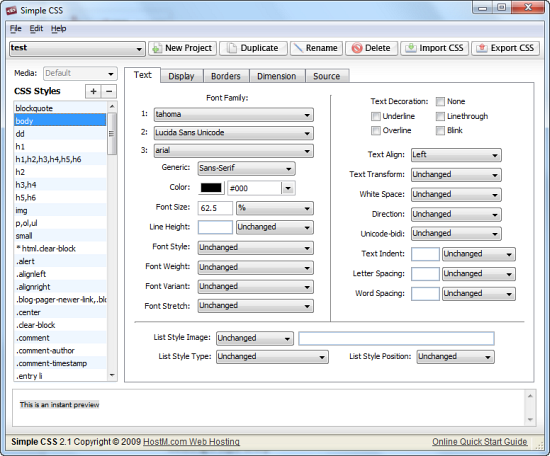Simple CSS is a free Cascading Style Sheets (CSS) authoring tool for Windows and Mac that lets you create one from scratch, or modify existing ones, using a familiar point-and-click interface. You don’t have to write any code. This is useful for non-designers (and designers alike) who might have trouble remembering declaration property names and their valid values.
Creating Cascading Style Sheets using Simple CSS is as easy as creating Cascading Style Sheets can get. Every style property is laid out before the user and grouped into tabs. You don’t even have to name the styles – you just select them from a menu. Common styles such as body, a, h1, h2 …, p, ul, li etc are already provided for easy insertion. Custom styles need to be manually entered and the program allows that. A preview window shows real time preview of each style as you change it.

Any property a CSS file can ever address is available for selection from the program’s main window. These are grouped into different tabs - Text, Display, Border and Dimension. The final tab – Source – shows the content of the actual CSS file that you are going to export.
Simple CSS is also a great way to manage multiple CSS projects. If you several CSS files for different websites or multiple versions of a CSS file, Simple CSS makes it easy to manage them.
Simple CSS is a nice tool but the inability to directly edit the CSS code is badly missing. Without a text editor Simple CSS developers will have a hard time convincing professional web coders to adopt it.
Related:
Zen Coding – Speedy way to write HTML and CSS code
CSS Mixer - Combine many style sheets into one
Free CSS Toolbox for web developers

Comments
Post a Comment